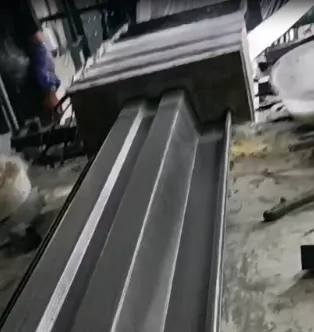loading...
- No. 9, Xingyuan South Street, Dongwaihuan Road, Zaoqiang County, Hengshui, Hebei, China
- admin@zjcomposites.com
- +86 15097380338
- Welcome to visit our website!
Exploring the Benefits and Applications of FRP Profiles in Construction and Industry
Understanding FRP Profiles A Comprehensive Overview
Fiber Reinforced Polymer (FRP) profiles are engineered composite materials widely recognized for their remarkable properties, making them an ideal choice for various applications across multiple industries. These profiles combine the lightweight characteristics of polymers with the high strength and stiffness of fibers, such as glass, carbon, or aramid. In this article, we will delve into the various aspects of FRP profiles, including their composition, benefits, applications, and future prospects.
Composition of FRP Profiles
At its core, an FRP profile consists of a polymer matrix reinforced by fibers. The matrix, typically made of thermosetting resins like epoxy, vinyl ester, or polyester, serves as a binder, while the reinforcing fibers provide tensile strength and rigidity. The orientation, type, and volume of these fibers can be tailored according to specific performance requirements, enabling engineers to design profiles that suit distinct applications.
FRP profiles can be manufactured through various methods, including pultrusion, filament winding, and compression molding. Among these, pultrusion is the most common technique, where the fibers are pulled through a resin bath and then shaped into a continuous profile as they pass through a heated die. This process not only ensures uniformity in the cross-section but also enhances the mechanical properties of the final product.
Benefits of FRP Profiles
The benefits of FRP profiles are multifold, making them an attractive alternative to traditional materials like steel and concrete.
1. Corrosion Resistance One of the standout features of FRP profiles is their resistance to corrosion. Unlike metals, which can degrade in harsh environments, FRP can withstand exposure to chemicals, moisture, and UV radiation, making them ideal for applications in coastal areas, chemical plants, and wastewater treatment facilities.
2. Lightweight FRP profiles are significantly lighter than steel, which simplifies handling, transportation, and installation. This weight advantage can lead to reduced foundation costs and simplified structural designs.
3. High Strength-to-Weight Ratio Despite their low weight, FRP profiles exhibit exceptional strength and stiffness. This characteristic allows for safer and more efficient design, as engineers can create lightweight structures without compromising integrity.
4. Customization The manufacturing process allows for a high degree of customization in terms of shape, size, and fiber orientation. This flexibility enables tailored solutions for specific design requirements and performance criteria.
frp profiles

5. Thermal and Electrical Insulation Unlike conductive materials, FRP profiles provide excellent thermal and electrical insulation properties. This feature is particularly beneficial for applications where electrical conductivity poses a risk.
Applications of FRP Profiles
Due to their unique properties, FRP profiles find applications in a diverse range of fields
- Construction and Infrastructure FRP profiles are used in bridges, decks, and reinforcing bars (rebar) for concrete structures, providing durability without the risk of corrosion.
- Transportation Lightweight FRP components are used in automotive, aerospace, and railway applications to enhance fuel efficiency and performance.
- Marine Applications FRP’s resistance to seawater makes it a preferred choice for boat hulls, docks, and other marine structures.
- Energy Sector In wind turbine manufacturing, FRP profiles are crucial in producing blades that are lightweight yet strong, contributing to more efficient energy generation.
- Electrical and Telecommunications FRP is employed in the production of poles, conduits, and insulators, taking advantage of its non-conductive properties.
The Future of FRP Profiles
As technology continues to advance, the future of FRP profiles looks promising. Innovations in materials science, including the development of bio-based resins and hybrid composites, hold the potential to enhance the environmental sustainability of FRP products. Additionally, advancements in manufacturing technologies, such as 3D printing, could lead to even greater customization and efficiency in the production of FRP profiles.
In conclusion, FRP profiles represent a fascinating intersection of materials science and engineering, offering solutions that meet the demands of modern applications. With their superior strength, lightweight nature, and resistance to corrosion, FRP profiles are set to play a crucial role in various industries, paving the way for more sustainable and innovative infrastructure solutions in the future.
-
The Rise of FRP Profiles: Strong, Lightweight, and Built to LastNewsJul.14,2025
-
SMC Panel Tanks: A Modern Water Storage Solution for All EnvironmentsNewsJul.14,2025
-
GRP Grating: A Modern Solution for Safe and Durable Access SystemsNewsJul.14,2025
-
Galvanized Steel Water Tanks: Durable, Reliable, and Ready for UseNewsJul.14,2025
-
FRP Mini Mesh Grating: The Safer, Smarter Flooring SolutionNewsJul.14,2025
-
Exploring FRP Vessels: Durable Solutions for Modern Fluid HandlingNewsJul.14,2025
-
GRP Structures: The Future of Lightweight, High-Performance EngineeringNewsJun.20,2025
